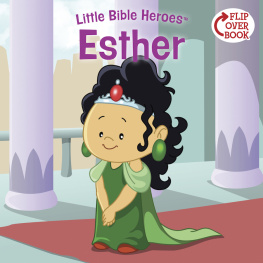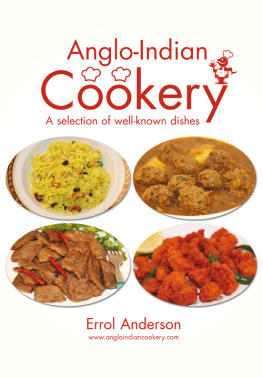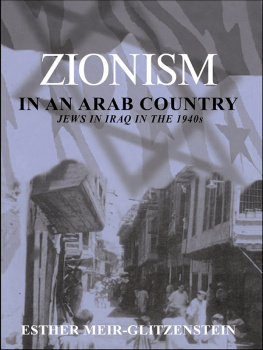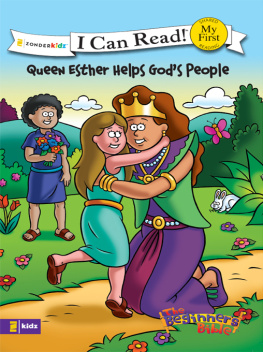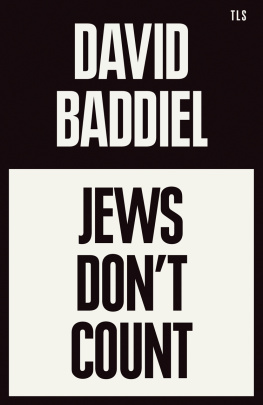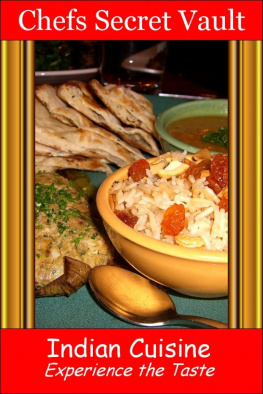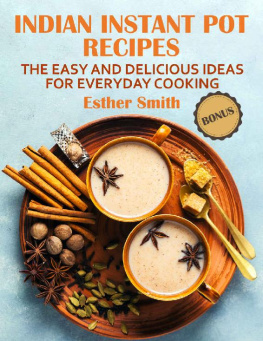Esther David - Bene Appetit: The Cuisine of Indian Jews
Here you can read online Esther David - Bene Appetit: The Cuisine of Indian Jews full text of the book (entire story) in english for free. Download pdf and epub, get meaning, cover and reviews about this ebook. year: 2021, publisher: HarperCollins India, genre: Home and family. Description of the work, (preface) as well as reviews are available. Best literature library LitArk.com created for fans of good reading and offers a wide selection of genres:
Romance novel
Science fiction
Adventure
Detective
Science
History
Home and family
Prose
Art
Politics
Computer
Non-fiction
Religion
Business
Children
Humor
Choose a favorite category and find really read worthwhile books. Enjoy immersion in the world of imagination, feel the emotions of the characters or learn something new for yourself, make an fascinating discovery.

- Book:Bene Appetit: The Cuisine of Indian Jews
- Author:
- Publisher:HarperCollins India
- Genre:
- Year:2021
- Rating:5 / 5
- Favourites:Add to favourites
- Your mark:
- 100
- 1
- 2
- 3
- 4
- 5
Bene Appetit: The Cuisine of Indian Jews: summary, description and annotation
We offer to read an annotation, description, summary or preface (depends on what the author of the book "Bene Appetit: The Cuisine of Indian Jews" wrote himself). If you haven't found the necessary information about the book — write in the comments, we will try to find it.
Bene Appetit: The Cuisine of Indian Jews — read online for free the complete book (whole text) full work
Below is the text of the book, divided by pages. System saving the place of the last page read, allows you to conveniently read the book "Bene Appetit: The Cuisine of Indian Jews" online for free, without having to search again every time where you left off. Put a bookmark, and you can go to the page where you finished reading at any time.
Font size:
Interval:
Bookmark:

L'Chaim
To Life
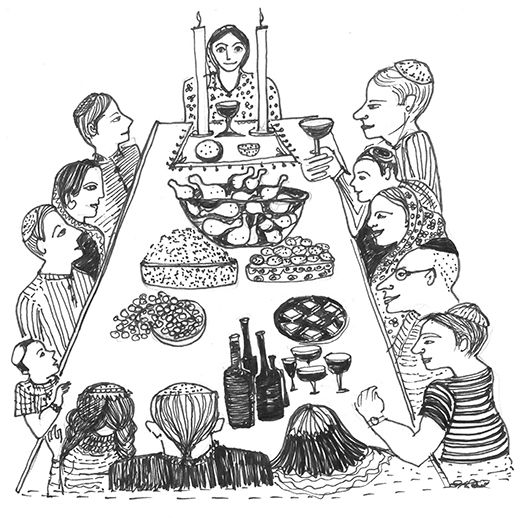
Contents
T his book is like a journey. In the course of writing it, I travelled to the seven main centres where Indian Jews live, in different Indian cities and states. I discovered how Indian Jews have preserved their food habits in a multicultural country like India, which has diverse cuisines. Indian Jews follow a strict dietary law of kosher but have derived ways and means of using the correct regional ingredients to abide by this law. This journey was an eye-opener for me, as it brought to light that each community has a different culinary method, which is influenced by regional Indian cooking.
There are about five thousand Jews and five Jewish communities in India, but they are fast diminishing in number. Till 1940 there were about 50,000 Jews in India. But soon after the independence of Israel, during the 1950s, many Jewish families emigrated back there and to other Western countries. They often return to India, and are seen in the synagogues of Mumbai, Pune, Ahmedabad and Alibaug during weddings, bar mitzvahs and Yom Kippur.
I had planned this journey to discover the food traditions of these communities. Traditional Indian Jewish food is a dying art.
The Bene Israel Jewish community is the largest in India. They live in western India in Mumbai and its environs, as well as in Alibaug and its surroundings in Raigad district, Maharashtra; and in Ahmedabad, Vadodara, Rajkot, Rajpipla and Palanpur in Gujarat.
Then there are the Cochin Jews in Kochi and its environs in Kerala; the Baghdadi Jews in Kolkata, West Bengal; the Bene Ephraim Jews in Vijayawada and its environs and in Machilipatnam, Andhra Pradesh. In the Northeast, we have the Bnei Menashe Jews in Aizawl, Mizoram, and in Imphal and Churachandpur, Manipur.
All these communities have different ways of following the dietary law in their food habits, yet there is a common thread, which links each community to the other.
The strict dietary law referred to above is of not mixing dairy products with meat dishes. Indian Jews also have fish with scales. Pork is taboo. They prefer to end their meals with fruit or betel leaf and betel nut. And, as a substitute to dairy products, they use coconut milk to make curries, sweets and other recipes.
Indian Jews have thorough knowledge about the animals they can and cannot eat. There is always a Jewish elder, known as shohet, in each community, who knows the law of kosher to slaughter animals. As kosher meat is not easily available in India, a majority of Indian Jews are vegetarians and have a variety of dairy-based foods with their meals.
Most Jewish communities live around seashores, lakes and rivers and have a preference for fish and rice. Many of the members took to the urban way of life and moved to cities; before that they were farmers who owned paddy fields, along with coconut and banana plantations. The Bene Israel Jews were known to be oilpressers.

During this journey, I had to deal with the languages spoken in various regions Telugu in Andhra Pradesh, Malayalam in Kochi, Bengali in Kolkata, Mizo and Manipuri in northeast India and Marathi in western India. I had to find interpreters in almost all areas, as I can only speak English, Hindi and Gujarati. It is important to mention that while most Indian Jews speak English, along with the regional languages, they say their prayers in Hebrew.
My first stop was Machilipatnam, where there was a small synagogue, to meet the Bene Ephraim Jews of Andhra Pradesh. I had read about this community earlier. In 2010, I had seen a short film about the Bene Ephraim Community Synagogue of Machilipatnam, and was fascinated by it. Later, Anjali K., a student from CEPT University, Ahmedabad, visited this synagogue and sent me the email address of Dr Mukthipudi Jaya Kumar Jacob, fondly known as Jaya Kumar. Before leaving for Andhra Pradesh, I had sent a questionnaire to Jaya Kumar, which he had translated into Telugu and passed on to his community members to send him the necessary information about their cuisine. He had then translated their inputs into English and sent me detailed information.
My next stop was Kerala. Cochin Jews are very few in number. In 2004, when I was in Kochi as a jury member for the forty-sixth national exhibition of art, I had met Elias Joseph Hai and his wife Ofera at the Kadavumbagam Synagogue, which was under repair at the time. Elias has a shop of tropical fish, aquariums and exotic plants in the foyer of the synagogue.
In 2017, the Kadavumbagam Synagogue was renovated by Elias Joseph Hai. It was ready for services, but did not have a Torah Scroll, also known as the Sefer Torah, a book of Hebrew religious literature, which is handwritten with a quill on specially prepared parchment, rolled into a scroll, placed in a casket and installed in an ark or cupboard at the synagogue. Reading a Torah Scroll is the religious law, which is known as Halakha. The word Torah literally means teachings of the Five Books of Moses, which are at the core of Jewish history and law.
The trustees of the synagogue received a Torah in 2018 as a gift from Israel and since then religious services have been held there.
Before flying to Kochi for my book, I had called Ofera from Ahmedabad. She recognized me and we decided to meet at the newly renovated Kadavumbagam Synagogue. After I landed at the Cochin International Airport and went to the synagogue, Ofera was waiting for me. We sat on a bench in a quiet corner of her shop and I told her about my project. She agreed to send me details about the traditional food of Cochin Jews. On my return to Ahmedabad, a month later, I received an email from Ofera with information about the Cochin Jewish community and their recipes.
For Aizawl and Imphal, I had received some contact numbers from an Ahmedabad-based professor at the Indian Institute of Management, Anil K. Gupta. Earlier, at a literature conference in Israel in 2017, I had also met Dr Margaret Ch. Zama from Aizawl. She had given me some invaluable information about northeast India. I received Yonathan Lallawmsangas mobile number from Dr Zamas friend Ms Zaithanchhungi, a well-known writer and researcher on the JewMizo connection. Yonathan was helpful and even sent the necessary papers for me to get military permission to enter Mizoram. But when I was in Aizawl, I could not manage to meet him. Only on my last day in Aizawl did Yonathan and his mother Tamar come to meet me at the restaurant of the hotel where I was staying. I took notes and also gave them questionnaires to collect information about their cuisine. Two months later, Yonathan sent me details about their cuisine, as well as recipes and photographs.
It was easier to collect information about the Bnei Menashe Jewish community of Manipur, as I had been given the phone number of Lhingneikim Manchong by my Israeli friends Myriam Damoni and Esther Thangjom Schomberg. Lhingneikim methodically answered all my questions in English and sent me details of food, recipes and photographs. But by the time I could go to Imphal, she had moved to Guwahati in Assam. Still, she sent me the contact numbers of Meital Singson and Akiva Haokip Khailen of the Shevei Israel Group of Imphal.
Manipur has a small community of Jews. I called Akiva and he came to meet me and gave me the details I needed, while I made notes and gave him a questionnaire. On my return to Ahmedabad, I received more information from Akiva about the Bnei Menashe cuisine, as well as some photographs.
Next pageFont size:
Interval:
Bookmark:
Similar books «Bene Appetit: The Cuisine of Indian Jews»
Look at similar books to Bene Appetit: The Cuisine of Indian Jews. We have selected literature similar in name and meaning in the hope of providing readers with more options to find new, interesting, not yet read works.
Discussion, reviews of the book Bene Appetit: The Cuisine of Indian Jews and just readers' own opinions. Leave your comments, write what you think about the work, its meaning or the main characters. Specify what exactly you liked and what you didn't like, and why you think so.

